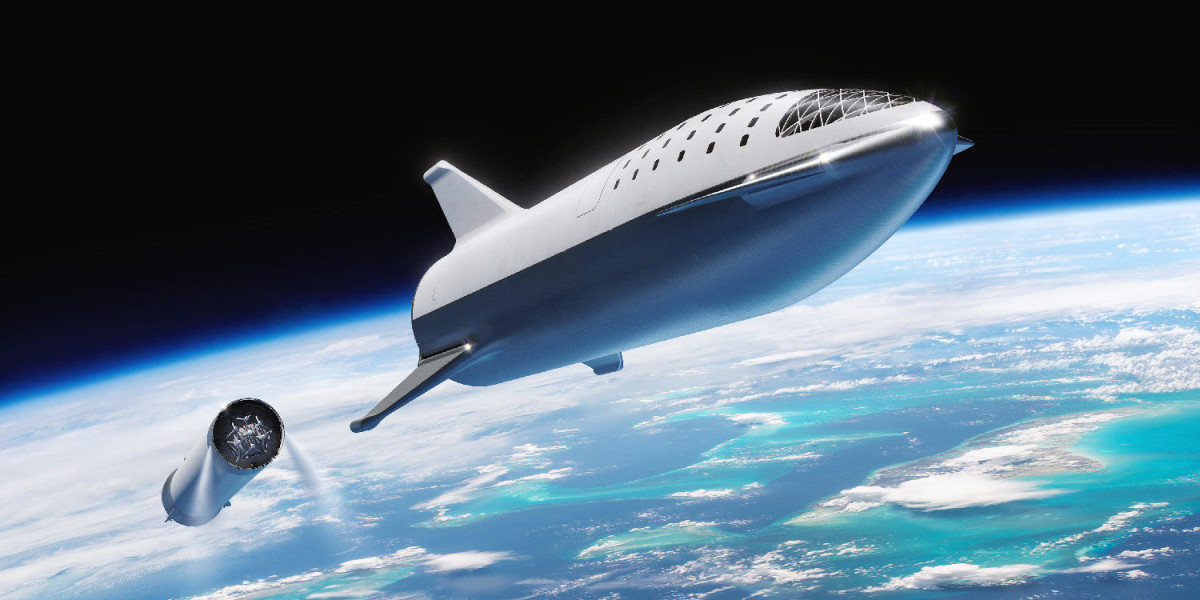Discover how innovative startups are revolutionizing the space industry, challenging giants like SpaceX and NASA with cutting-edge technology and ambitious missions. From 3D-printed rockets to air-launch systems, these companies are redefining access to space and paving the way for a new era of cosmic exploration.
The New Space Race: David vs. Goliath in the Cosmos
In the vast expanse of space exploration, a new breed of contenders is emerging, ready to challenge the status quo. Small rocket companies, once overshadowed by industry giants, are now making waves with their agile approach and groundbreaking technologies. These nimble startups are not just participating in the space race; they're redefining it, bringing fresh perspectives and innovative solutions to a field long dominated by government agencies and massive corporations.
Rise of the Space Startups: A Paradigm Shift
The landscape of space exploration has dramatically shifted in recent years. While NASA and SpaceX continue to dominate headlines with their multi-billion dollar projects and grandiose missions to Mars, a cadre of smaller players is quietly revolutionizing the industry from the ground up. Companies like Rocket Lab, Relativity Space, and Firefly Aerospace are proving that you don't need a nation's GDP to reach for the stars.
This shift represents more than just a change in the players; it's a fundamental reimagining of how we approach space. The traditional model of space exploration, characterized by massive government-funded projects and decades-long development cycles, is being challenged by a more agile, iterative approach. These startups are bringing Silicon Valley's "move fast and break things" mentality to an industry where failure has always been an expensive and often dangerous proposition.
Key Players in the Small Rocket Arena
Rocket Lab: Based in New Zealand and the United States, Rocket Lab has quickly established itself as a pioneer in small satellite launches. Their Electron rocket, capable of delivering payloads of up to 300 kg to low Earth orbit, has already completed numerous successful missions. What sets Rocket Lab apart is their focus on high-frequency launches and their innovative use of carbon composite materials in rocket construction.
Relativity Space: This Los Angeles-based company is making waves with its ambitious goal of 3D printing entire rockets. Their first rocket, Terran 1, is set to be the world's first entirely 3D-printed orbital rocket. This approach allows for rapid iteration and customization, potentially revolutionizing how rockets are designed and manufactured.
Firefly Aerospace: Specializing in economical small to medium payload launches, Firefly Aerospace is developing the Alpha rocket, designed to carry up to 1,000 kg to low Earth orbit. The company's focus on affordable access to space makes it an attractive option for smaller satellite operators and research institutions.
Virgin Orbit: Part of Richard Branson's Virgin Group, Virgin Orbit takes a unique approach to satellite launches. Their LauncherOne system uses a modified Boeing 747 to air-launch rockets, providing a flexible and potentially more cost-effective method for reaching orbit.
Astra: With a focus on rapid iteration and lean manufacturing, Astra aims to provide daily space delivery by 2025. Their approach emphasizes simplicity and mass production, aiming to dramatically reduce the cost of access to space.
Blue Origin: While not as small as some of the other companies on this list, Blue Origin, founded by Amazon's Jeff Bezos, represents a significant private investment in space technology. Their New Shepard rocket is designed for suborbital space tourism, while the larger New Glenn rocket aims to compete in the orbital launch market.
Vector Launch: Although currently in reorganization, Vector Launch made significant strides in the small satellite launch market before its financial troubles. Their planned Vector-R rocket was designed to carry payloads of up to 60 kg to low Earth orbit.
These companies are not just following in the footsteps of their larger counterparts; they're carving out their own niches and pushing the boundaries of what's possible in space technology. From air-launch systems to 3D-printed rockets, each company brings a unique approach to the challenge of making space more accessible.
Innovations Driving the Small Rocket Revolution
The success of these small rocket companies isn't just about being in the right place at the right time. It's driven by a series of technological innovations that are fundamentally changing the economics and capabilities of space launch systems.
3D Printing: The Game Changer in Rocket Manufacturing
Relativity Space has made waves with its fully 3D-printed rockets, a technology that promises to revolutionize the aerospace industry. This approach offers several significant advantages:
Rapid prototyping and iteration: Traditional rocket manufacturing can take months or even years. With 3D printing, design changes can be implemented and tested in a matter of days.
Significant reduction in parts and assembly time: A typical rocket engine might consist of thousands of individual parts. 3D printing can reduce this to just a handful, dramatically simplifying the manufacturing process.
Customization for specific mission requirements: 3D printing allows for easy customization of rocket components for specific payloads or mission profiles, without the need for expensive retooling.
Weight reduction: Advanced 3D printing techniques can create complex internal structures that are lighter yet just as strong as traditional components.
The company's Terran 1 rocket, nicknamed "It's a Feature," showcases the potential of this technology. Relativity Space claims they can go from raw materials to launch in just 60 days, a timeframe that would be unthinkable with traditional manufacturing methods.
However, 3D printing in aerospace isn't without its challenges. Ensuring the structural integrity and reliability of printed components is crucial, especially given the extreme stresses rockets undergo during launch. Relativity Space and others in this field are investing heavily in advanced materials science and quality control processes to address these concerns.
Air-Launch Systems: A New Perspective on Reaching Orbit
Virgin Orbit's LauncherOne system offers a unique approach to reaching orbit, one that provides several advantages over traditional ground-based launches:
Flexibility in launch locations: By using a modified Boeing 747 as a mobile launch platform, Virgin Orbit can theoretically launch from any airport with a long enough runway. This opens up new possibilities for launching from locations closer to the equator or optimized for specific orbital inclinations.
Reduced weather dependencies: Air-launch systems can fly above much of the lower atmosphere, reducing the impact of weather on launch windows.
Lower infrastructure costs: Without the need for expensive ground-based launch facilities, air-launch systems can potentially offer more cost-effective access to space.
Improved payload efficiency: Launching from high altitude means the rocket doesn't need to fight through the densest part of the atmosphere, potentially allowing for more efficient use of fuel.
The LauncherOne system works by carrying a two-stage rocket to an altitude of about 35,000 feet. The rocket is then released, ignites its engine mid-air, and continues its journey to orbit. This method has been successfully demonstrated, with Virgin Orbit achieving its first commercial payload delivery in January 2021.
While air-launch systems offer unique advantages, they also come with their own set of challenges. The size of payloads is limited by the carrying capacity of the aircraft, and the complexity of mid-air launches introduces new potential points of failure. Despite these challenges, the flexibility and potential cost savings of air-launch systems make them an attractive option for certain types of missions, particularly in the small satellite market.
Reusability: Not Just for the Big Players
SpaceX may have popularized the concept of reusable rockets with their Falcon 9 boosters, but small companies are adapting this approach to their scale:
Rocket Lab's Electron rocket: Rocket Lab has announced plans to recover and reuse the first stage of their Electron rocket. Their approach involves using parachutes to slow the booster's descent, followed by mid-air capture by helicopter. This method is particularly suited to smaller rockets, where the fuel required for a propulsive landing (as used by SpaceX) would significantly reduce payload capacity.
Partial reusability: Some companies are exploring partial reusability, focusing on recovering the most expensive components of the rocket rather than the entire first stage. This approach can offer some of the cost benefits of reusability without the full complexity of landing an entire rocket stage.
Rapid refurbishment: Even when full reusability isn't feasible, companies are focusing on designing rockets that can be quickly refurbished and relaunched. This approach can significantly increase launch frequency and reduce costs.
The push for reusability in the small rocket sector faces unique challenges. The smaller size of these rockets means there's less margin for the additional systems required for recovery and reuse. However, the potential cost savings and increased launch frequency make it an attractive goal.
These advancements in reusability are making space more accessible than ever before, potentially opening up new markets and use cases for space technology.
Market Opportunities and Challenges
The rise of small rocket companies is both a response to and a driver of changes in the broader space industry. Understanding the market dynamics is crucial to appreciating the potential impact of these innovative startups.
The Growing Demand for Small Satellite Launches
As technology miniaturizes and the costs of space-based services decrease, the demand for small satellite launches is skyrocketing. This trend is driven by several factors:
CubeSats and nanosatellites: These miniaturized satellites, often no larger than a shoebox, are becoming increasingly capable. Universities, research institutions, and even high schools are now able to build and launch their own satellites for scientific research or technology demonstrations.
Internet of Things (IoT) constellations: Companies like Swarm Technologies and Kepler Communications are deploying constellations of small satellites to provide global IoT connectivity. These networks require frequent launches to establish and maintain coverage.
Earth observation and climate monitoring: High-resolution imaging and environmental monitoring no longer require large, expensive satellites. Companies like Planet Labs operate constellations of small satellites that provide daily imaging of the entire Earth's surface.
Military and defense applications: The ability to rapidly deploy and replace small satellites is attractive for defense applications, providing resilient communication and reconnaissance capabilities.
Technology demonstration: Small satellites provide a cost-effective platform for testing new space technologies before deploying them on larger, more expensive missions.
This growing market for small satellite launches plays directly to the strengths of small rocket companies. Their ability to provide dedicated launches with flexible scheduling and orbit selection is highly attractive to small satellite operators who might otherwise have to wait for rideshare opportunities on larger rockets.
Navigating Regulatory Hurdles
With great power comes great responsibility, and small rocket companies must navigate a complex regulatory landscape:
Launch licenses: In the United States, companies must obtain licenses from the Federal Aviation Administration (FAA) for each launch. This process involves demonstrating the safety and reliability of the launch vehicle, as well as compliance with environmental regulations.
International regulations: Companies operating internationally must navigate the regulatory requirements of multiple countries. This can be particularly complex for air-launch systems that may operate in different national airspaces.
Space debris mitigation: As the number of objects in orbit increases, there's growing pressure on launch providers to ensure their activities don't contribute to the space debris problem. This may involve designing satellites for controlled re-entry or implementing "design for demise" principles.
Spectrum allocation: For companies launching communication satellites, obtaining the necessary spectrum allocations from international bodies like the International Telecommunication Union (ITU) is crucial.
Export controls: Many rocket technologies are subject to strict export controls, which can complicate international collaborations or sales.
These regulatory challenges require innovative solutions and close collaboration with regulatory bodies. Some companies are working with regulators to develop new frameworks that balance safety and innovation, potentially paving the way for a more streamlined regulatory process in the future.
The Impact on Space Exploration
The rise of small rocket companies is having a profound impact on the broader field of space exploration, opening up new possibilities and challenging long-held assumptions about how we access and utilize space.
Democratizing Access to Space
Small rocket companies are breaking down barriers to space access in several key ways:
Lowering costs: By focusing on efficiency and embracing new technologies, these companies are significantly reducing the cost per kilogram to orbit. This makes space accessible to a wider range of organizations and enables new types of missions that were previously cost-prohibitive.
Increasing launch frequency: The ability to launch more often means more opportunities for organizations to get their payloads to space. This is particularly important for time-sensitive missions or for maintaining and upgrading satellite constellations.
Customization and flexibility: Small rocket companies often offer more flexible launch options, allowing customers to choose specific orbits or launch windows that best suit their needs.
Enabling space programs for smaller countries: Countries that previously couldn't afford their own space programs can now leverage the services of small rocket companies to launch nationally important satellites or conduct scientific research in space.
This democratization is leading to a more diverse and dynamic space ecosystem, with a wider range of voices and perspectives contributing to the future of space exploration.
Accelerating Scientific Discovery
With more frequent and affordable launches, scientific missions are benefiting in numerous ways:
Increased opportunities for universities and research institutions: Academic institutions can now realistically plan and execute their own space missions, providing hands-on experience for students and enabling cutting-edge research.
Rapid deployment of cutting-edge instruments: New scientific instruments can be designed, built, and launched to space more quickly, accelerating the pace of discovery in fields like astrophysics, Earth observation, and space weather monitoring.
Faster iteration on space-based technologies: The ability to launch more frequently allows for rapid testing and refinement of new space technologies, speeding up the development cycle for everything from propulsion systems to life support technologies.
Enabling constellation-based science: Some scientific questions are best answered by networks of small satellites working together. The rise of small rocket companies makes such constellations more feasible to deploy and maintain.
The agility of small rocket companies is accelerating the pace of scientific discovery in space, enabling researchers to ask and answer questions that were previously out of reach.
Future Prospects and Predictions
As the small rocket industry matures, it's poised to play an increasingly important role in shaping the future of space exploration and utilization. Here are some key trends and predictions for the future:
The Next Frontier: Beyond Low Earth Orbit
While most small rocket companies currently focus on launches to low Earth orbit (LEO), many are setting their sights on more ambitious goals:
Lunar missions: Several companies are developing capabilities for lunar payload delivery, supporting the growing interest in lunar exploration and potential resource utilization.
Asteroid mining: As technology advances, small rocket companies could play a crucial role in supporting asteroid mining operations, potentially revolutionizing resource availability both in space and on Earth.
Deep space exploration: While large rockets will likely continue to dominate crewed missions to other planets, small rockets could support these efforts by launching supplies, scientific instruments, or communication relays.
Space manufacturing: The microgravity environment of space offers unique possibilities for manufacturing. Small rocket companies could facilitate the transport of raw materials to orbital factories and return finished products to Earth.
These aspirations showcase the long-term vision driving the small rocket revolution and hint at the industry's potential to reshape our relationship with space.
Collaboration and Competition
The future of space exploration will likely see a complex interplay of collaboration and competition:
Partnerships between small rocket companies and established space agencies: We're already seeing collaborations between startups and agencies like NASA. These partnerships allow agencies to leverage the agility of small companies while providing startups with valuable expertise and resources.
Potential mergers and acquisitions: As the industry matures, we may see consolidation, with larger companies acquiring promising startups or mergers between complementary small rocket companies.
Specialization and niche markets: Some companies may focus on specific types of missions or payload sizes, carving out unique niches in the market.
Integration with the broader space economy: Small rocket companies will likely play a crucial role in the developing in-space economy, facilitating everything from orbital manufacturing to space tourism.
This dynamic environment promises to keep the space industry vibrant and progressive, driving innovation and pushing the boundaries of what's possible in space exploration.
Technological Advancements on the Horizon
The small rocket industry is likely to both drive and benefit from a range of technological advancements:
Advanced propulsion systems: Research into new propulsion technologies, such as aerospike engines or beamed energy propulsion, could further improve the efficiency and capabilities of small rockets.
Artificial Intelligence and autonomy: AI could play an increasingly important role in rocket design, mission planning, and even in-flight decision-making, potentially improving safety and reducing costs.
New materials: Advances in materials science, including new alloys and composites, could lead to lighter, stronger, and more heat-resistant rockets.
On-orbit servicing and assembly: Small rockets could facilitate the development of technologies for assembling and maintaining large structures in space, potentially enabling more ambitious space projects.
These technological advancements could open up new possibilities for small rocket companies, further expanding their role in space exploration and utilization.
Conclusion: Small Companies, Big Impact
The rise of small rocket companies is more than just a trend; it's a fundamental shift in how we approach space exploration. These innovative startups are proving that sometimes, the biggest moves come from the smallest players. As we look to the future, one thing is clear: the sky is no longer the limit.








